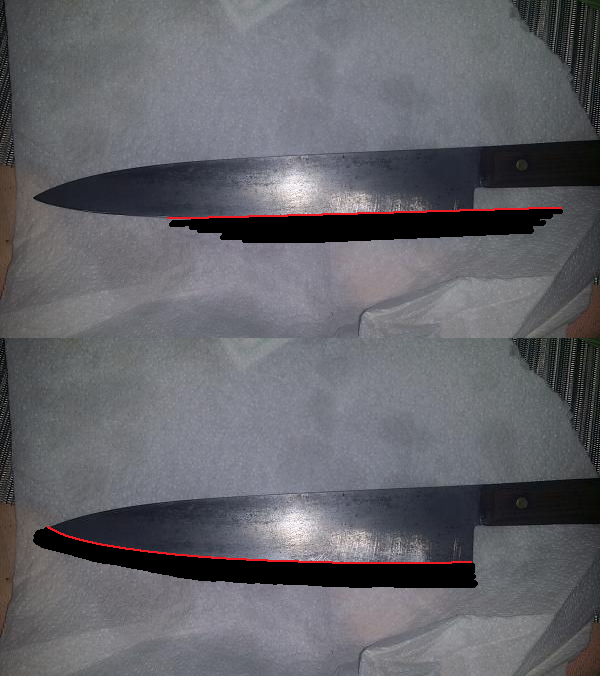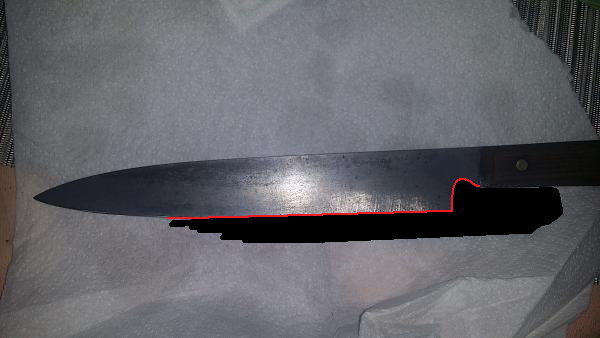- Joined
- Jan 13, 2013
- Messages
- 1,510
- Reaction score
- 8
So I bought a forgie at a thrift shop knowing it had been really badly sharpened over the years as the pictures I am attaching indicate. It has that typical "too wide heel" caused by poor sharpening over many many years, i.e. the contact with a cutting board is just not there any more.
But I bought it because it was cheap and I was thinking if I could only learn how to reshape it, while keeping the temper on the steel, I would have one awesome sujihicki!
So I am hoping someone would point me to a thread or to a video or just tell me: how do you fix a knife that looks like this - assuming it is even possible.
(Reshaping on stones is clearly hopeless as it would just take too long, but a friend of mine has a bench grinder if that is the key - but would that ruin the temper?)
Anyway, any advice would be appreciated.


But I bought it because it was cheap and I was thinking if I could only learn how to reshape it, while keeping the temper on the steel, I would have one awesome sujihicki!
So I am hoping someone would point me to a thread or to a video or just tell me: how do you fix a knife that looks like this - assuming it is even possible.
(Reshaping on stones is clearly hopeless as it would just take too long, but a friend of mine has a bench grinder if that is the key - but would that ruin the temper?)
Anyway, any advice would be appreciated.








